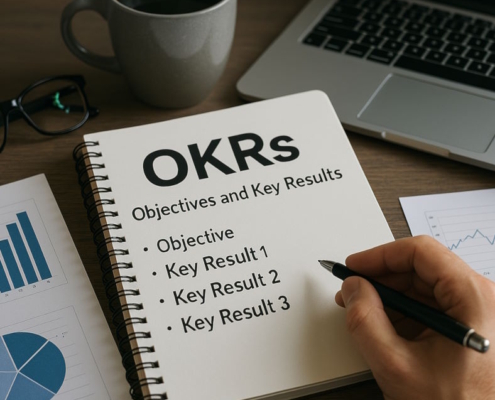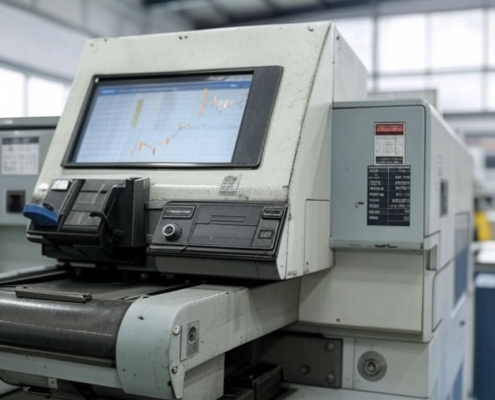Documents Needed for a Business Valuation
The documents needed for a business valuation are as follows:
- Financial Statements (Balance Sheet, Profit & Loss Statement) (Important)
- Account payable and Account receivable with ageing report
- Tax Returns (Important)
- Pending litigation if any (Important)
- Investments
- Corporate bylaws, article of incorporation, board meeting minutes, stock ledger
- Business plans
- Lease(s)
- List of Intellectual Capital
- Business Forecasts and Projections (If available)
- Business Plans and Organization Documents (If available)
- Payroll
- Loan documents
- Fixed asset with depreciation
- Inventory reports
How to Understand a Business Valuation
The process of valuing a business is not easy unless perhaps one is an accountant or a natural numbers person. In order to conduct an accurate valuation, there are a few definitions to understand first:
Seller’s Discretionary Earnings
Seller’s discretionary earnings, or SDE, is similar to EBITDA. EBITDA stands for earnings before interest, taxes, depreciation, and amortization. This is essentially the pure net proft of a business.
Business owners calculate SDE to determine the true value of the business for a new owner, similar to what EBITDA does. SDE will include certain expenses such as the income one reports to the IRS and non-cash expenses. All the revenue the business brings in is included, basically. However, unlike EBITDA, the evaluator will also add in the owner’s salary and benefits into the SDE calculation. Typically, large businesses will use EBITDA calculations to value their businesses while small businesses will use SDE. This is because small business owners usually expense personal benefits.
It is important that potential buyers understand SDE, not only business owners. This is because it is likely that a business owner will provide a number for the buyer. It is critical that the buyer understand how the owner arrived at that value, as well as what those numbers say about the business.
To calculate a business’ SDE, one should start with the pretax, pre-interest earnings. After, one will add back any purchases that are not considered essential to operations. These might include vehicles and travel, which will be reported as business expenses. Employee outings, one-time-purchases, charitable donations, and the owner’s salary will all be included in the SDE. It is important to know that buyers may ask about discretionary cash flow, which means one should be prepared to include and value every major expense and purchase.
Any current debts and future payments, known as liabilities, should be subtracted from the net income.
SDE Multiples
SDE indicates the true, monetary value of a business. However, an SDE multiple values a business according to industry standards. If an owner uses EBITDA to value his or her business, then he or she will use an EBITDA multiple. In general, small businesses should use SDE to perform business valuations, because small business owners typically take a big percentage of their business’ revenue to cover their salary and living expenses.
For every industry there is a different industry multiple. A particular business’ SDE multiple will depend on how a market shifts, the location of the business, the business’ size, its assets, and how much risk is involved in the transfer of ownership. The higher an SDE multiple, the more a business is worth.
How to Organize Finances for Valuing a Business
The process for figuring out the value of a small business is complex, and because of this, a business owner or buyer may wish to consider hiring a professional business broker or accountant. These individuals specialize in performing valuations, and it is easier to rely on their insight than trying to do the evaluation on one’s own. That said, an individual is still perfectly capable of valuing a business on their own with the right resources. However, the first step is to get one’s financial information organized.
Before valuing a small business, both buyers and sellers should organize their financial records so that calculations will be accurate. Also, in addition to doing the valuation, having organized finances is crucial in order to transfer the ownership of a business.
Sellers will need to have the following paperwork organized to make the valuation process as smooth and easy as possible:
- Deeds, licenses, and proprietary documents
- Profit and loss statements for the previous three years
- Tax returns and filings
- Brief overview of business or personal finances
Regarding the tax returns, it is important to note that purchases which were reported to the IRS as business expenses should be added back to earnings when calculating the SDE. These expenses include travel expenses, personal vehicles, and other one-time non-essential purchases.
While buyers do not need to provide all these documents, it is still wise for them to review their own financial information and make sure that it is in order. This is because sellers will want to see a buyer’s credit report and financial profile.
Having a strong, organized financial foundation helps an owner or a seller to keep a realistic view of the company and its value. The more an individual focuses on this step of the valuation process, the more confident he or she will go into the calculations phase.
How to Take Stock of a Business’ Assets for Valuation
It can seem like an impossible task to determine the value of a whole business and reduce it to a single number. But it is important to remember that this number is just an estimate. A seller needs to put a number on their business if he or she wishes to be paid for all their hard work. All kinds of equity should be taken into account.
A business owner should come up with a list of the property, production, and resources that make up the business. This would also include assets, liabilities, cash, investments, employees, and intellectual property. This list will come in handy later when one creates an overview of the company for prospective buyers. If a buyer is intimidated by this part of the process, there is no harm in seeking the help of a professional advisor, who can help assess the business’ assets with an objective point of view.
To correctly take stock of one’s assets, a seller will need to follow a series of steps. The first of these steps is to create a detailed report of business assets and liabilities. Business assets include anything that adds value to the company. These things might include intellectual property, a production line, delivery truck, or equipment. Anything that is part of the business will need to be included on the list as an asset or liability. When it comes to assets, there are two categories that are given different weight when calculating the value of a business. These categories are:
Tangible Assets
Tangible assets are a company’s material resources and holdings. Some examples of these assets include:
- Real estate and property
- Equipment and means of production
- Inventory and stock
- Cash on hand
Intangible Assets
Intangible assets are the non-material assets that add value to a business. These are a critical part of an SDE multiple. Therefore, it is necessary to identify these assets and write down their estimated value. Intangible assets might include the following:
- Patents, trademarks, copyrights
- Intellectual property
- Brand and reputation
- Customer base and loyalty
How a Business’ Liabilities Factor into Valuation
It is important for a business owner to be aware of his or her business liabilities. Liabilities may include debt and outstanding credit on the business’ books. These debts reduce the total value of the business. This is the reason this number is subtracted from the SDE when value is calculated. In general, sellers choose to keep their business liabilities and pay off their debt after the sale of the business.
A business’ relevant liabilities may include the following:
- Notes payable
- Business loans
- Accounts payable
- Accrued expenses
- Debts and payables
- Unearned revenue
Is It Necessary to Create a Business Plan and Model for Valuation?
After reviewing a business’ assets and liabilities, the next step in performing a valuation is creating a business plan and model. If an individual is selling his or her business, he or she should make it clear to any buyers how the business makes money. It should also be clear how the business will continue to make money in the future, to attract buyers.
Why Is a Business Plan Important for Valuation?
Creating a business plan can help business owners accurately predict revenue and market growth. It is an important way of showing prospective buyers that the business will continue to succeed and grow. A strong business plan provides buyers with context, such as location, purpose, and mission. It also details the major services or products that the company offers.
Why Is a Business Model Important for Valuation?
A business model shows that a business can bring in money. This applies to subscription-based businesses, direct-to-consumer e-commerce, and B2B consulting. While a valuation is just an estimation, a business model offers buyers a vision of how they can reach a customer base and make money should they purchase the company.
However, this step in the process does not only apply to sellers. Buyers interested in acquiring a company should make a list of the target business’ assets and liabilities. This keeps emotion out of the buying process, ensuring the decision is based on facts and sound financial judgment. It is important that the buyer and seller agree on the valuation. A buyer should keep an eye out for business plans that outline processes clearly and display good, reliable management. It is much easier to transfer ownership of a well-run business. This ensures that profits are maintained and the process is much easier to manage.
How to Research an Industry for Valuation of a Business
For both buyers and sellers, it is essential to be familiar with the industry in which a business operates. Buyers should not make an offer on a business before becoming knowledgeable on that business’ industry. The more expertise, the better. For sellers, it is equally important to understand their industry’s trends in order to make an accurate valuation. This valuation should reflect a business’ assets and the current market.
A business’ SDE multiple, as well as the valuation method, may vary depending on certain factors. One of these factors is the strength of the industry in which the business operates. It is the duty of the seller to learn all they can about companies similar in size, model, and revenue. These similar businesses are known as comparables, or comps. They can give a businessperson an idea of how a company fits within the market and provides insight about the sector in general. Understanding similar companies can help a businessperson evaluate a company’s market share and ability to grow. Using this method, a seller will be able to show potential buyers what makes his or her business special.
Annual and quarterly reports for public companies are usually available to review online. It may also be possible, depending on corporate transparency, to see what similar businesses are selling for. Buyers interested in the internet and tech industry can look at online directories like Crunchbase and AngelList to find information about startups, investors, funding, and more topics.
What Are Different Methods to Perform a Small Business Valuation?
There are three business valuations techniques that buyers and sellers should understand in order to perform an accurate small business valuation. These approaches use different variables of a business to calculate the value in the form of a number. These variables include a business’ income, assets, or market data based on similar companies.
A valuation should be based on consistent calculations, so it is important not to mix valuation formulas or methods. However, it is perfectly acceptable to try different formulas separately to compare results. If numbers do not seem right, one should not be afraid to investigate why this is or contact an accountant for assistance.
What Is the Income Approach to Valuation?
The income method used to evaluate a business figures out the amount of income a business may be expected to earn in the future. Taking this approach means picking between two sub-methods:
Discounted Cash Flow Method
The discounted cash flow method of valuation figures out the current value of a business’ future income. The business’ cash-flow prediction is adjusted depending on the risk involved in the purchase of the business. This method is best for newer businesses with a lot of growth potential but that are not yet profitable.
Capitalization of Earnings Method
The capitalization of earnings method of valuation figures out a business’ future profitability. This calculation considers the business’ cash flow, annual rate of return (ROI), and its expected value. Unlike the discounted cash flow method, which takes potential changes into account, the capitalization earnings method assumes that calculations for a moment in time will continue going forward. Therefore, this method is best for established businesses that enjoy a stable profit.
It is useful to know that the majority of online business valuation calculators use the income approach. However, if a buyer or seller has additional financial information available, then it may be better to use a tool that studies profit, revenue, assets, and liability. This results in a more comprehensive analysis.
What Is the Asset-Driven Approach to Valuation?
The asset-driven approach determines the value of a business by looking solely at its assets. The Adjusted Net Asset Method will figure out the difference between a business’ assets (equipment, inventory, property, intellectual property) and its liabilities. Both values are adjusted to reflect fair market values. Asset valuations are a valuable tool for internal analysis as they can help an owner monitor spending and resources.
To perform an asset-driven evaluation, an owner will need to make a list of the business’ assets and give them a monetary value. For depreciating assets such as equipment, the value is typically somewhere between the sale price and the depreciated value. It is often a good idea to estimate how much a piece of equipment would sell for today. This is the number one should use.
As a business owner is usually familiar with his or her own equipment and production line, he or she can come up with accurate estimates of an asset’s value and depreciation. If an owner fails to adjust the asset’s worth in line with the current market, it is still possible to have a good idea of the business’ material value. This method of valuation is useful for businesses that mainly hold investments or real estate, is not profitable, or is hoping to liquidate. For businesses in these situations, buyers will want to know the value of investments and equipment.
What Is the Market Approach to Valuation?
The market approach to valuing a business figures out a company’s value based on the purchases and sales of similar companies in the industry. Therefore, this approach can help a buyer or seller decide on an appropriate price based on the local market. So long as a business collects enough relevant data on the market, then any business can use this approach to business valuation. However, it may be an especially helpful approach for businesses that are growing at a rapid pace.
































